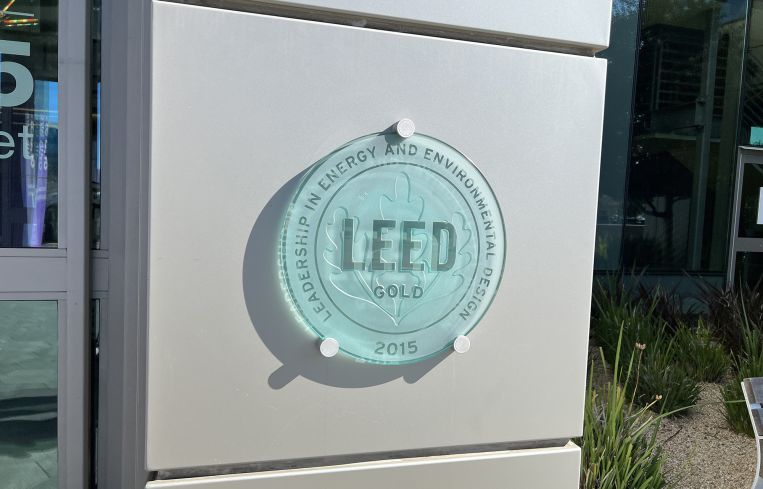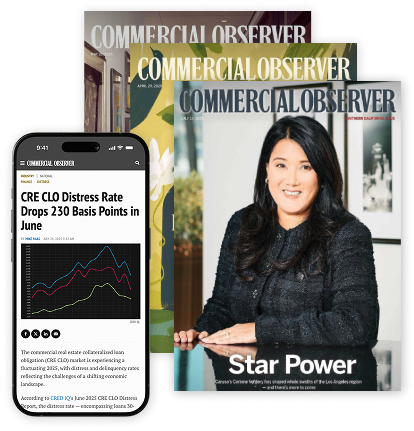Climate Change Isn’t Static. Building Certifications Shouldn’t Be Either.
By Suhail Y. Tayeb and Amy Myers Jaffe June 26, 2025 10:30 am
reprints
The launch of Leadership in Energy and Environmental Design (LEED) certification 25 years ago changed the real estate world. For the first time, the industry had a structured framework for making buildings healthier and more efficient. Energy models, daylighting studies, material health declarations, efficient water systems, and responsible siting were all part of the certification process. It made sustainability visible and measurable in a way that investors, municipalities and tenants could rally behind.
But the world has changed again.
Today, a new force is rising that threatens to leave even the best intentioned green buildings behind: artificial intelligence. Not as a bolt-on tool or a fancy gadget, but as the new nervous system of sustainable real estate itself. And, if LEED does not evolve fast, it risks becoming a museum of good intentions while the real innovation races ahead through smart sensors, real-time data, self-optimizing systems and virtual power plants.
Buildings are no longer passive structures. They are becoming intelligent, adaptive organisms that sense, learn, and optimize every minute. Smart buildings today adjust lighting, heating, ventilation and cooling based on real-time occupancy patterns, weather forecasts and energy market conditions. They predict mechanical failures before they occur. They minimize carbon emissions hour by hour, not just year by year.
This is not theoretical. It is happening right now.
At the New York University Sustainable Real Estate Conference in March, companies like Titanium Intelligent Solutions and Adaptis.ai showed how AI is transforming operations. Titanium integrates smart devices for predictive maintenance and indoor climate optimization. Adaptis.ai simulates life-cycle carbon and cost impacts across retrofit options, empowering owners to act on both sustainability and financial performance.
Other companies like Measurabl and Gridium reinforce this shift. Measurabl enables real-time portfolio-wide carbon tracking. Gridium uses live energy data to optimize consumption. These innovations demonstrate that true sustainability today is not something you achieve once at a ribbon-cutting ceremony. It is something you operate, refine and prove every single day.
And, yet, in LEED’s current structure, these kinds of innovations are often crammed into optional innovation credits. They are treated as bonus features rather than essential elements of sustainable building performance.
This is LEED’s blind spot.
LEED was built for a world where design dictated destiny. If you installed thick insulation, low VOC materials and efficient systems, your building was considered sustainable almost by default. Static decisions were assumed to deliver static benefits over time.
Today, performance is dynamic. It shifts with tenant behavior, weather and grid volatility. Two identical buildings could earn platinum plaques at commissioning, but a decade later, one may waste energy while the other thrives, all because one adapted and the other didn’t. Static checklists cannot capture dynamic reality.
A building that optimizes and reduces its footprint over time is more sustainable than one that was certified but left unmonitored.
AI is already enabling this shift. HVAC systems now anticipate heat waves and precool during off-peak hours. Lighting adjusts autonomously based on daylight and occupancy. Water systems detect leaks early and prevent waste. Sustainability is no longer a static design feature. It is an active, operational mindset that evolves daily. This is the future of real estate, and it demands a new kind of recognition.
Imagine if adaptive optimization became a core requirement. Adaptive optimization credits would become mandatory, rewarding systems capable of adjusting building performance based on live operational data. Operational resilience would be scored based on actual real-world energy and emissions performance, not design projections. Life cycle carbon accounting would track a building’s environmental impact across decades of operation, not just initially modeled assumptions. Ethical data use standards would ensure that building intelligence is leveraged responsibly without compromising occupant privacy. Continuous commissioning and dynamic improvement would be recognized and rewarded, encouraging buildings to evolve, learn and improve as conditions change.
This would transform LEED from a static design trophy into a living certification that matures with the building itself. Climate change is not static, and our certification systems shouldn’t be either. Temperatures are rising. Weather systems are destabilizing. Energy grids are stressed. A single moment of compliance will not suffice.
If LEED, WELL, Green Globes and similar frameworks want to stay relevant, they must pivot from compliance checklists to continuous operational excellence. Otherwise, a new generation of smart green certifications will emerge, focused not just on design intent but on actual, provable resilience over decades.
Sustainability is no longer just built. It is operated. It is optimized and lived. And if we want a real estate sector that helps lead the way to a resilient future, then it is time for our certification systems to evolve at the same pace as the intelligent buildings they hope to recognize.
Because, in this new era, sustainability is not what you design. It is what your building decides, every hour of every day.
Suhail Y. Tayeb is a clinical assistant professor at New York University’s Schack Institute of Real Estate. Amy Myers Jaffe is director of the Energy, Climate Justice and Sustainability Lab at NYU’s School of Professional Studies.



